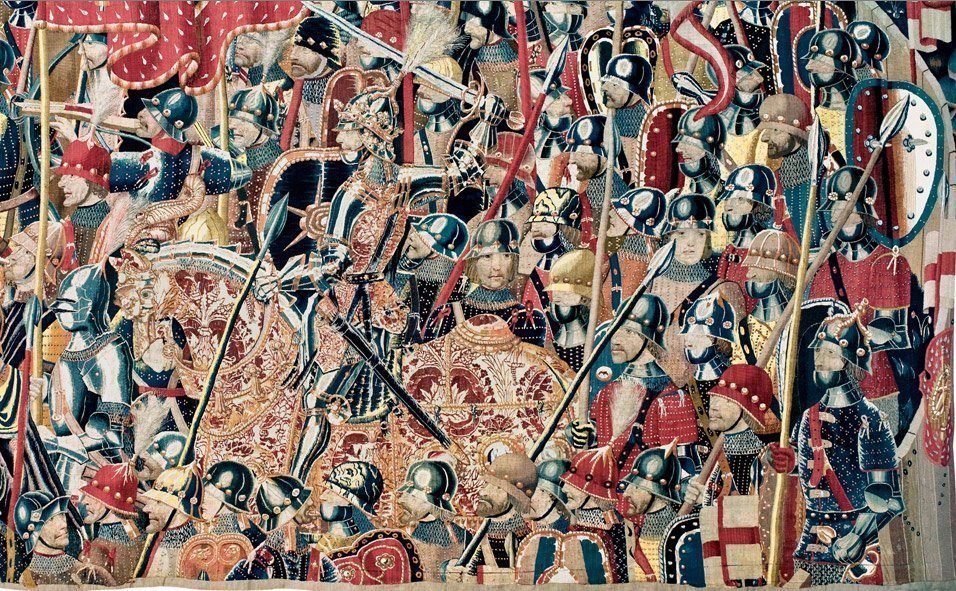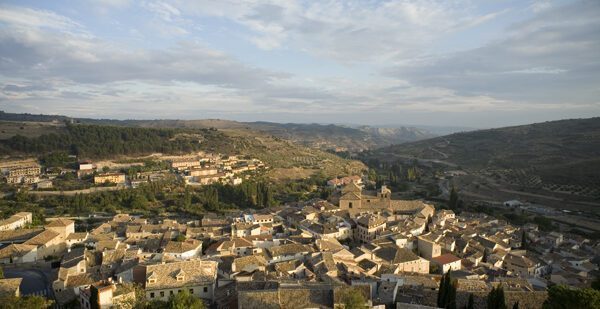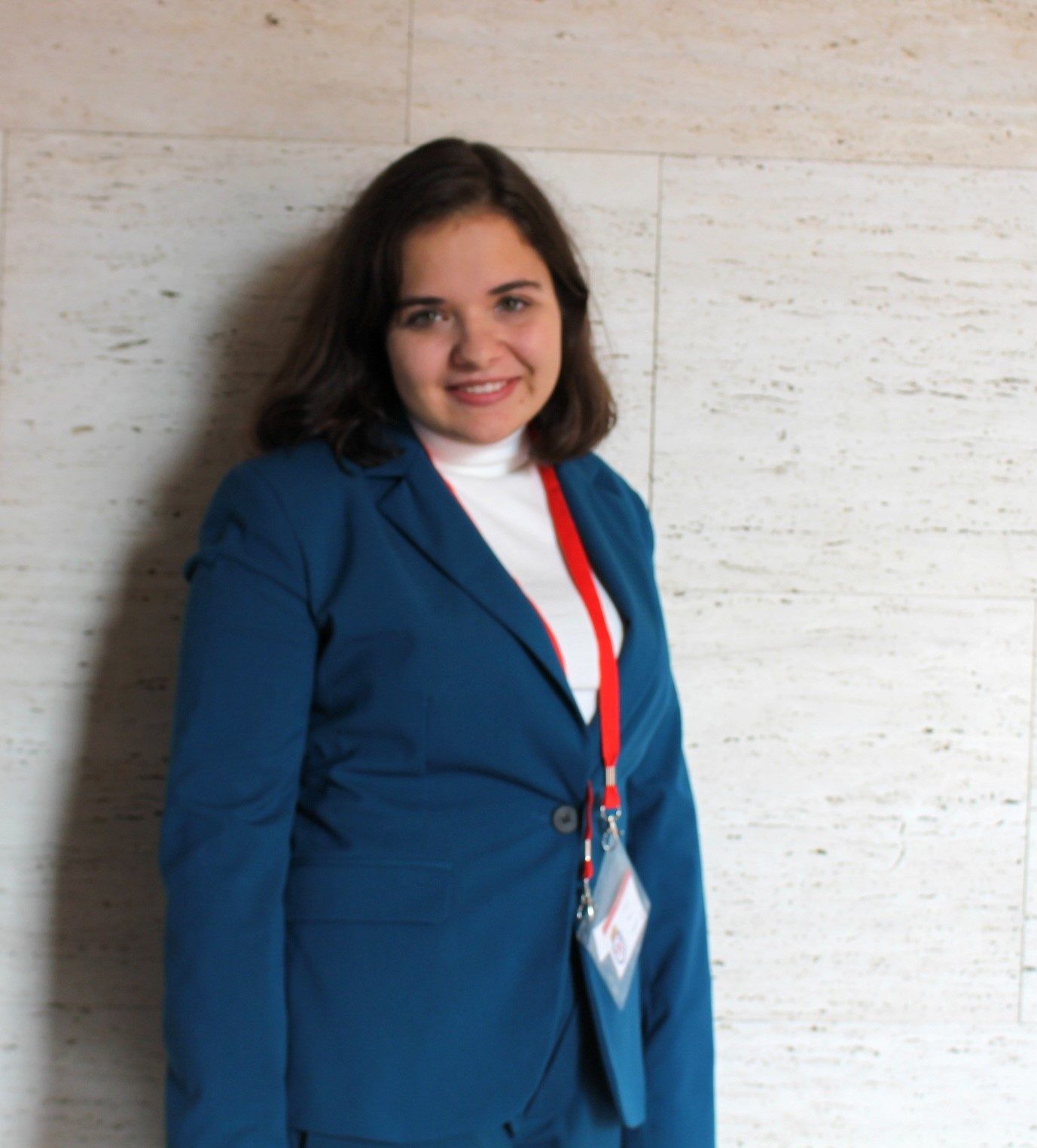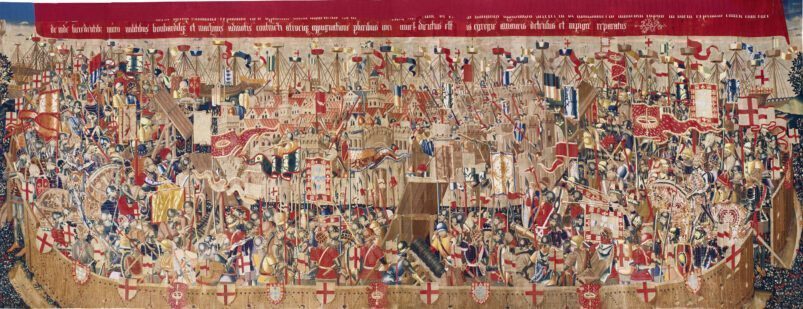At 102 km from Madrid, South of the province of Guadalajara, we find the village of Pastrana, very rich in its history and cultural heritage. Today we are talking about one part of that enormous legacy, called “the tapestries of Pastrana”.
Send to us by: Julia Heras
It was Alfonso V of Portugal (1448-1481) who ordered the manufacture of the tapestries. We cannot determine the date, but we do know that they were first mentioned in 1532, in the testament of the 3rth duke of the Infantado. They were kept in the palaces of the dukes, first in Madrid and then in Guadalajara, until 1667, when the hangings were sent to the “colegiata” of Pastrana, a baroque church built in the XVIIth century to which was incorporated the original Gothic church built in the XIVth century by the knights of the Order of Calatrava.
Some time after the tapestries arrive in the town, the church and the town council agreed to cut the pieces in half so they could be more easily moved in and out of the church especially in the day of the Corpus Christi, when they were taken to the street (Calle Mayor) for the procession. With the passage of time the tapestries deteriorated to the point that they ended on the floor of the major sacristy of the collegiate church. It would be in the XXth century when professor D. Elias Tormo y Monzó discovered them and called attention to their historical and artistic significance, since they represented with great detail and perfection the conquests of king Alfonso of Portugal of the cities of Alcazar Seguer (1458) and Arcila in 1471. During the Second Republic the hangings were taken to Paris, as part of the Portuguese Pavilion on the International Exhibition of Art and Technology in Modern Life, organized in 1937. The people of Pastrana opposed the translation of their patrimony with the suspicion that they would never return.

In July of 1936, the Spanish Civil War broke out. The tapestries were taken to Switzerland together with other Spanish treasures. They came back to Madrid in 1940 and were kept in the Royal Factory of Tapestries (Real Fábrica de Tapices). During those years, the Marquis of Lozoya, Director General of fine arts in the Ministry of Education, proposed to take them to the Alcazar of his native Segovia, but the priest and the mayor of Pastrana visited General Franco and he ordered that the tapestries should be returned to its legitimate owner. With the hangings and other artistic pieces of the church, the priest, Don Mariano Moreno Pastor, opened the “parochial Museum” on July 16, 1950. The original institution was surrounded by poverty: poor lighting and a primitive and risky way as the tapestries were hung with regular though powerful nails.
The museum would not change for a long time, although its care improved through the zeal of other pastors, mainly don Enrique Cabrerizo and don Licinio Garcia Yagüe. However, in 2005 it was found that the hangings were infected by microscopic bugs. Thanks to the Carlos Amberes Foundation they were taken to Brussels to be restored. One of the causes of this infestation was that the primitive museum had no proper conservation measures. On this occasion even the building (old sacristy of the collegiate church) in which the tapestries had been displayed went through a great renovation. But since the funds were insufficient, in order to pay for the new construction, the hangings went on a long tour all around Spain and the world (Brussels, Toledo, Dallas, San Diego…) During this time the people of Pastrana also thought that the tapestries wouldn’t come back.

But back they came, and finally, on October 14 of 2014 the new “Museo Parroquial de Pastrana”, with the tapestries, as its main focus of attraction, was inaugurated. This new museum has all the necessary for their conservation, with special attention to the filtration of the air and the wellbeing of the treasures. This reopening of the museum also included the incorporation of two guides who are locals to the area, and now the tapestries are especially important because they are practically the only source of tourism to the town. So don’t forget to think about Pastrana next time you are planning your trip through Spain; you won’t regret it.
About the author

My name is Julia Heras, I am a History student at Universidad Rey Juan Carlos (Fuenlabrada, Madrid). My area of focus is cultural heritage management in relation with sustainable tourism. I also like to write about those topics I find interesting related to the conservation, management and innovation in the cultural heritage world.
- Instagram: @hjuliaxd and @gestioncultural.99
- Twitter: @JuliaHeras5
- Facebook: Julia Heras

